Ask Ethan: Will the ‘Great Attractor’ defeat dark energy?

The strongest pull for hundreds of millions of light years goes toe-to-toe against the most energetic force of all.
“We detect motion along this axis, but right now our data cannot state as strongly as we’d like whether the clusters are coming or going.”
–Alexander Kashlinsky
On the largest scales in the Universe, dark energy causes the Universe’s expansion to accelerate. It not only drives distant galaxies farther and farther apart over time, it causes them to speed up relative to one another’s perspective. But on the other hand, gravitation causes matter to clump together, like our own galaxy and local group have, and can defeat this expansion if you get a large enough amount of matter together in one location. But galaxies and groups aren’t the biggest structures we know of. The Universe also has clusters and superclusters of galaxies, and we have some right in our own backyard! Will one of those defeat dark energy in the end? Bob Simone wants to know:
If we are only ultimately bound to [Andromeda], and everything else will eventually slip out of our visible universe, how can all the we all be heading to the great attractor (or whatever we’re all heading towards at the gravitational center of Laniakea)?
There are thousands of galaxies not all that far away, cosmically, that are tugging on us.
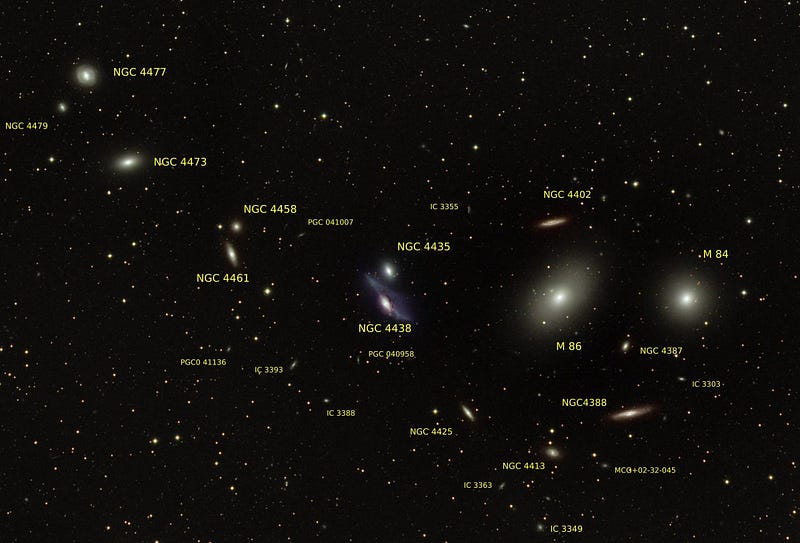
Will they pull us in in the end, despite dark energy? Or will dark energy cause us to expand fast enough, and soon enough, to prevent that from ever happening? To answer this question, we’ll need to look at three things: the Universe’s expansion, local imperfections to that motion, and what the Universe looks like near us.
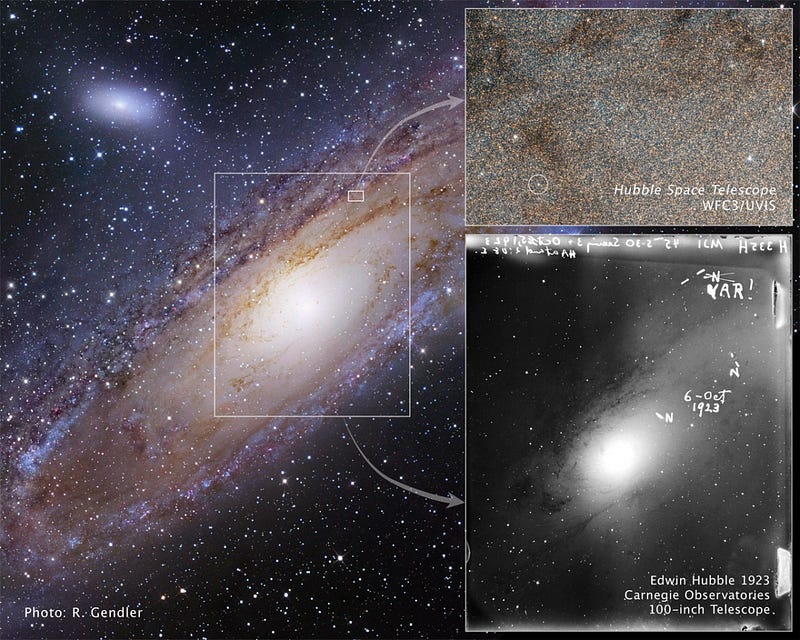
1.) The Universe’s expansion. Back in the 1920s, Edwin Hubble was able to identify a known class of star — Cepheid variables — in the spiral-shaped objects seen in the sky. Over time, they appeared to brighten and dim periodically, with a specific amount of time inherent to each star. There’s a brightness/time period relationship that these stars all obey, meaning that if you can measure that time period and their apparent brightness, you can figure out how distant each star, and therefore the galaxy it’s in, actually is from you.
This concept is known as a standard candle, and we’ve progressed from Cepheids to other properties of galaxies to type Ia supernovae as the brightest, most easily identifiable standard candles out there. What we’ve been able to determine through these methods is that there’s a relationship known as Hubble’s law in all directions that we look: that the speed at which an object appears to move away from us is proportional to the Hubble parameter multiplied by the distance to that object. You might have heard it called the “Hubble constant” before, and that was a good way to think about it in the years and decades before the Hubble Space Telescope, since we had only looked about halfway across the Universe at that point. But the farther we looked, the better we were able to realize that the Universe’s expansion was not only changing over time, it was speeding up in a way that told us there was more to the Universe than matter, radiation and curved space alone.
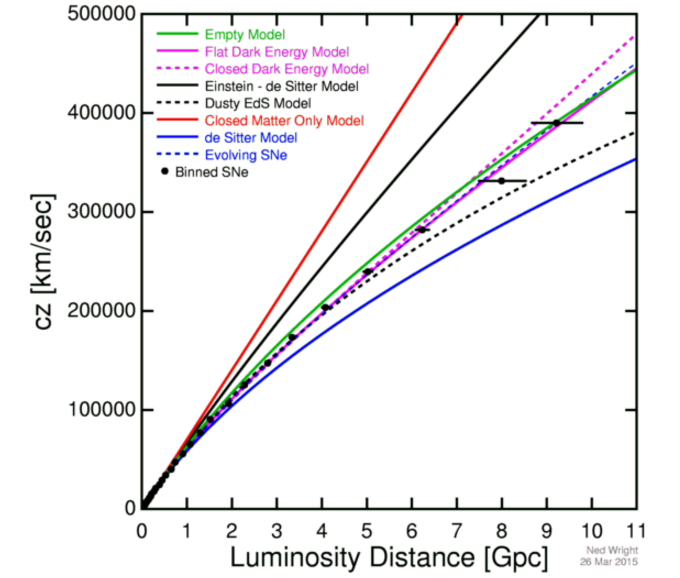
Instead, the Universe today was made up of approximately 70% dark energy, which becomes more and more important as time goes on. Half the Universe’s age ago, dark energy was not yet noticeable, as it was only a tiny percentage of the total energy density. But as the matter and radiation dilutes and drops in density, dark energy comes to dominate the Universe’s expansion, causing the acceleration we see today. It means that any structures that weren’t already gravitationally bound — that hadn’t become denser-than-average by a large enough amount — would never wind up bound together in this Universe. Instead, they would accelerate away as the expansion of the Universe dictated.
2.) Local imperfections to that motion. But even on distance scales millions of light years in size, gravitation had plenty of time to bring the Universe together. Trillions of star clusters and hundreds of billions of galaxies formed in the Universe over the first few billion years since the Big Bang, as the large-scale structure of the Universe became rich and complex. The largest overdense regions grew into not only galaxies but into groups and clusters of tens, hundreds or thousands of galaxies, all bound together in one giant region.
The gravitational pull of these imperfections matters a great deal. When we look out at a galaxy like Andromeda, our closest neighbor, we see it some 2.5 million light years away. Based on the expansion of the Universe, it ought to be moving away from us. But the gravitational pull of the Milky Way on Andromeda — and of Andromeda back on us in the Milky Way — can defeat the expansion if these two galaxies are massive enough. If the attractive force between them is large enough, and was large enough early enough on, we’ll become gravitationally bound together. although dark energy might push the distant galaxies away from us, we’ll eventually fall into one another, and merge into a single giant structure over time.
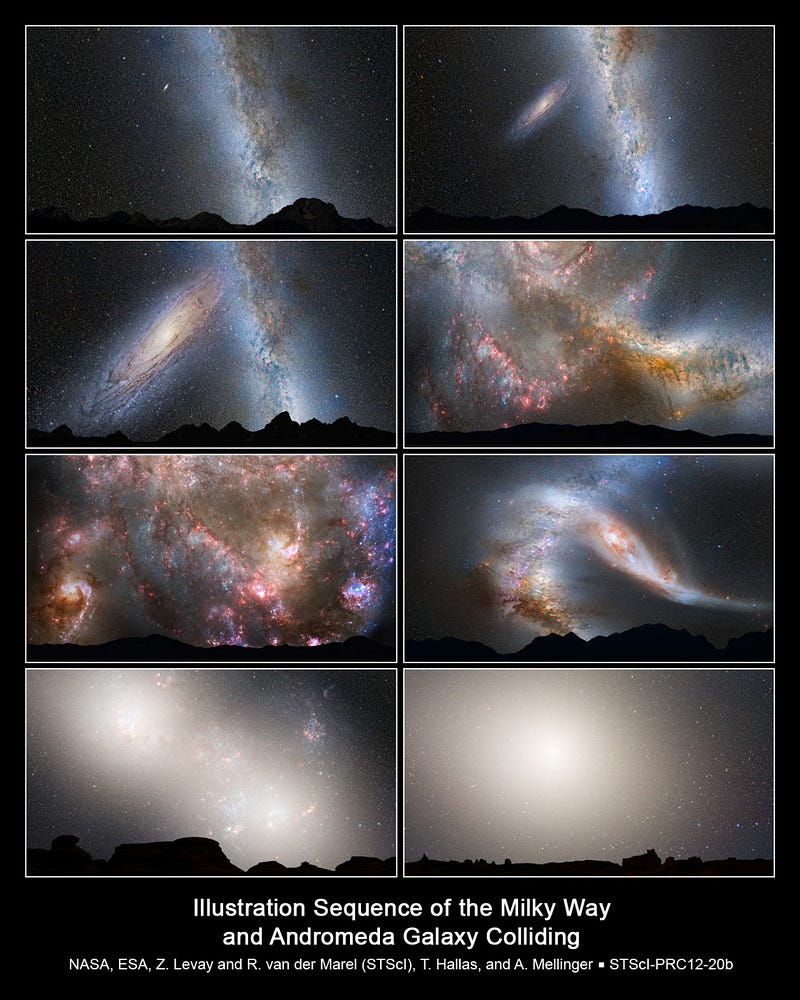
This will happen! This is the actual fate of our local group. The big question, then, to get to Bob’s point, is what’s going on with the great attractor, and the nearest clusters and superclusters to our location? For that, we need to map out the nearby, local Universe.
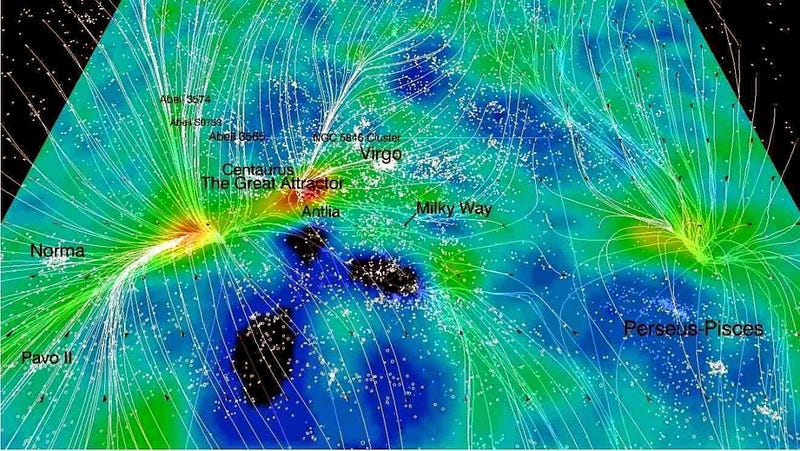
3.) What the Universe looks like near us. With over 80% precision, we’ve done exactly that! (The parts we’ve missed are the galaxies located behind the galactic plane, which are very hard to see from our perspective.) We can take a look at three things all at once:
- All the individual galaxies around us, and measure their motions relative to us.
- Hubble’s expansion of the Universe, and combined with the galactic distances, infer how much these galactic motions depart from Hubble’s law.
- The measured and inferred masses of what we see around us, and determine what masses need to be present at what locations in the Universe to cause the motions we see.
So we map out the local Universe, in terms of position and motion, and we map out the local mass, and we see how things are moving and why.
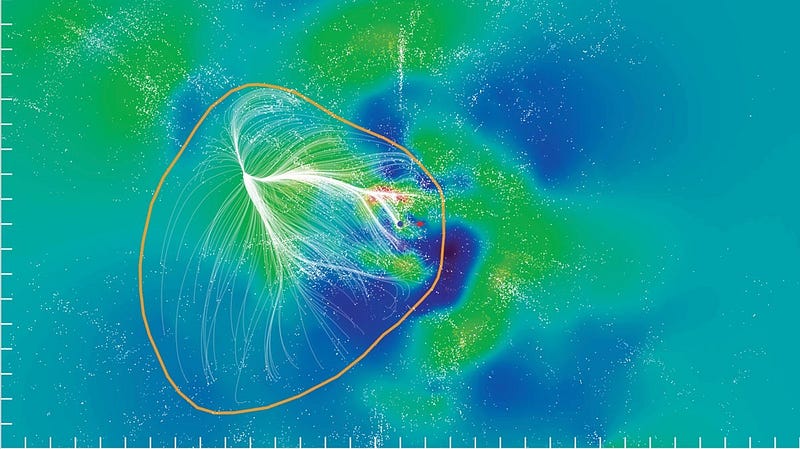
The cosmic flows project recently put all this information together, and determined that the Milky Way is bound as part of the local group, that our group is one of many groups nearby but outside of the Virgo Cluster, and that all of these groups and clusters, combined with a few others, form a larger superstructure known as the Laniakea supercluster. The mass has to be there in order to explain the motions of these local structures, where the missing mass was previously simply referred to as the “Great Attractor” because the motions we saw didn’t match up with the masses we had found.
The very large structure — the collection of galaxies in Laniakea which is responsible for this great, attractive force — causes the local group and many other galaxies in our local supercluster to move towards this mass. They depart from the Hubble flow significantly: by many hundreds of kilometers per second. It’s a real force, a substantial effect, and it works to fight against the Hubble expansion and dark energy.
But it loses.
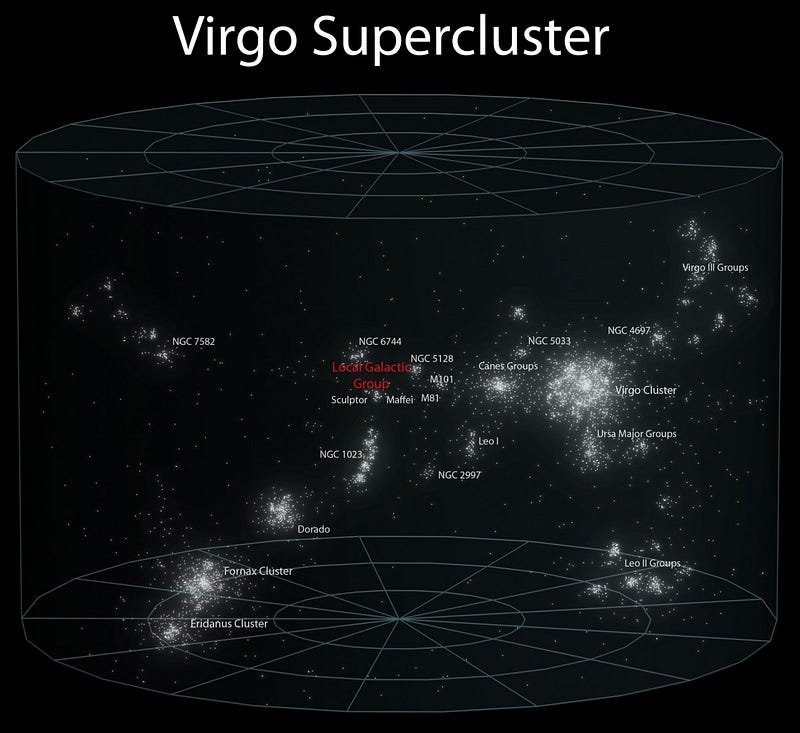
Dark energy and the present expansion of the Universe is not only stronger than the attractive pull of the local supercluster, it’s not even a contest. The peculiar velocity, or the departure from the Hubble expansion, is only about 20% of what it would need to be to bind us to this large structure. In fact, the structure itself isn’t even bound; this supercluster is only an apparent structure, and as the Universe evolves, Laniakea itself will dissociate.
So the full answer to your question, Bob, is that we are being pulled towards Laniakea, towards the “Great Attractor,” but the force we’re being pulled with is woefully insufficient to cause us to fall in. All it can cause is for the supercluster to accelerate away from us at a somewhat lower rate than average, and to remain within our reach for a few billion years longer than an equidistant galaxy on the opposite side of the sky. Laniakea is real and massive, but it’s also temporary, and it’s not massive enough to hold itself together or to eventually pull us in. The fate of our local group is a lonely one after all.
Submit your Ask Ethan questions to startswithabang at gmail dot com!
This post first appeared at Forbes, and is brought to you ad-free by our Patreon supporters. Comment on our forum, & buy our first book: Beyond The Galaxy!





